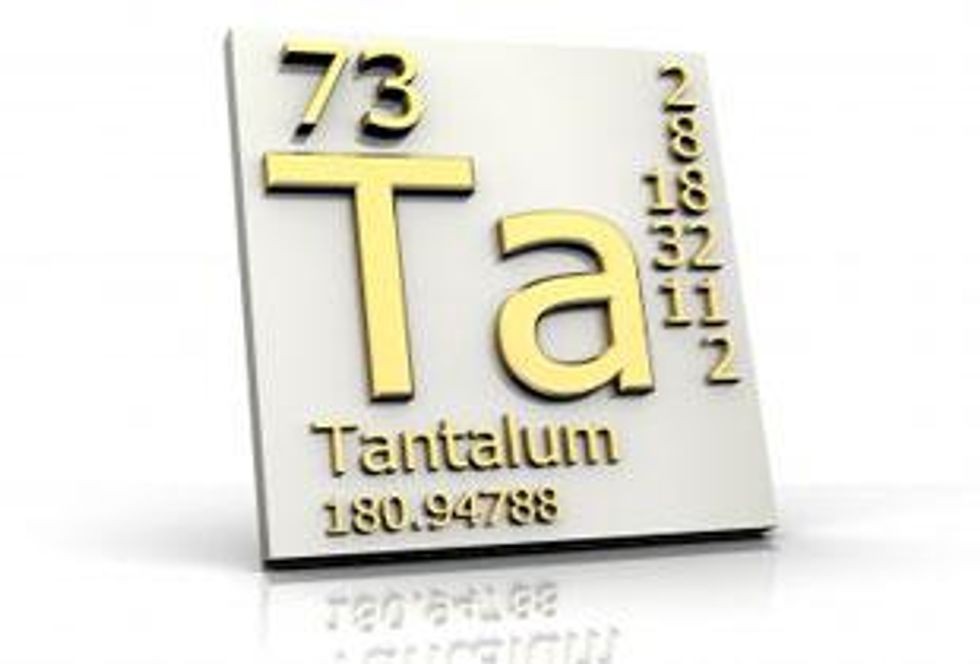The Conflict Minerals Act: Good Start or Bad Law?
The Conflict Minerals Act, which governs the disclosure of conflict minerals in electronics supply chains, has been criticized for having too many loopholes.
Under the regulations, companies that have determined that conflict minerals sourced from countries like the Democratic Republic of the Congo — which is plagued by violent, armed militia groups intent on exploiting the area’s natural resources — are “necessary to the functionality or production” of one or more of their products must file a report with the US Securities and Exchange Commission (SEC).
Companies that contract out the manufacturing of products (or components) that contain conflict minerals can circumvent the required disclosure if it is deemed that the company holds no influence over the item being contracted. A company does not qualify as having influence over the manufacturing of a product if it is simply stamping its brand on the product or if it merely services a product manufactured by a third party, according to the SEC.
Essentially, if a company hands over control of the manufacturing of any component of its product, the disclosure of the materials used by the manufacturer is unnecessary. What, then, is to stop companies from outsourcing the manufacturing of their products in order to bypass SEC regulations?
Tracking a supply chain is not an easy task. In an August Forbes article, Erika Morphy highlights the difficulty that riding a supply chain of conflict minerals presents. “Supply chains, for various reasons, can be notoriously opaque especially for items that are provided by a supplier that may be two or three tiers away from a core supplier. Products also tend to consist of many components — to give one example, an automobile line might be made up of 5,000 components.”
Consumers will drive disclosure
Daniel Persico, vice president of special products at Kemet (NYSE:KEM), one of the largest users of tantalum, agrees that contracting out manufacturing is a way for companies to circumvent the regulations.
“We may end up seeing some companies that have maintained their own manufacturing sell their manufacturing and become virtual manufacturers just so they don’t have to deal with disclosing their materials. Instead, they’ll let the suppliers deal with the regulations.”
However, Persico does not believe that this task will be an easy undertaking for larger electronic companies. He maintains that “there is such strength in the younger, social-media-inclined generation that large electronic companies cannot completely avoid disclosing the information of the sources of their materials.” Companies will have to enforce the ethical nature of their products because that’s what consumers are pushing for, he said.
Companies filing a conflict minerals report must also determine their products’ country of origin, ensuring that such enquiries are performed “in good faith and [are] reasonably designed.” The SEC’s request that companies make a “reasonable effort” to do so relies heavily on the goodwill and ethical inclinations of companies that could be using conflict minerals.
Such vague wording could make it difficult for consumers to gauge the accuracy of a company’s disclosure of specialized materials. Persico explained that when it comes to deciding what is a “reasonable effort,” the decision will ultimately be established by the auditors. However, he added that a certain degree of wiggle room in the guidelines is necessary as a company’s ability to provide accurate disclosure depends on where it stands on the supply chain and on its ability to obtain the required information from its suppliers.
In the end, Persico believes that companies’ due diligence will all come down to consumers and PR. Public companies that need to abide by the Conflict Minerals Act will aim to state that their products are “DRC Conflict Free” in their annual filings. To achieve this aim, some companies may go so far as to refuse any materials sourced by conflict areas.
Worst law of the year?
Some, however, remain unconvinced that the law has succeeded in achieving its goals.
In December, Forbes contributor Tim Worstall cast his vote for Dodd-Frank as the worst law of the year. Worstall’s reasoning is that the law “simply doesn’t achieve the outcome that its proposers were hoping for.”
Worstall sees the Conflict Minerals Act as more complex than necessary, but worse than that, the act pressures electronics companies to avoid conflict minerals and then exempts the companies because they don’t have to disclose conflict-mineral use — because “they are not manufacturers according to the definitions of the law.”
It is true that the Conflict Minerals Act does not require companies to go the whole nine yards to obtain information and is broad in its push for companies to adhere to ethical practices when sourcing materials from potential conflict zones. And certainly, depending on where a company sits in its supply chain, obtaining this information could be a hassle.
However, the Conflict Minerals Act is still at an early stage of its life. Persico sees the act as taking measures to ensure that 80 percent of companies are adhering to regulations before focusing on figuring out how to make the subsequent 20 percent follow suit. He said that there are opportunities for the act to be strengthened and revised moving forward should the need for reassessment be required. With so many variables in the manufacturing process, it seems that a few loopholes are necessary in the regulation’s infancy in order to ensure it is strengthened in the end.
Securities Disclosure: I, Vivien Diniz, hold no direct investment interest in any company mentioned in this article.
Related reading:
SEC Finalizes Conflict Minerals Rules
Final Conflict Minerals Rules Taking Shape
Conflict Minerals Rules Drive Interest in Secondary Tantalum Market
